| Nine-roomed monument built on Mount
Carmel, overlooking the Bay of Haifa, in the central room of which the remains
of the Báb are buried. |
| In 1891 Bahá'u'lláh pointed out to 'Abdu'l-Bahá the site where the remains of the Báb were to be placed. In 1898 Abdu'l-Bahá instructed that the remains of the Báb be brought from their hiding place in Ṭihrán to the Holy Land; they arrived
in 'Akká in January
1899. In that same year 'Abdu'l-Bahá
laid the foundation-stone of the edifice, and a few months later construction began.
About the same time, the marble sarcophagus designed to receive the body of the Báb,
a gift from the Bahá'ís of Rangoon, was shipped to Haifa. |
| There were many difficulties in completing the building of the Shrine: long negotiations
with the owner of the building site; the exorbitant price at first demanded for the
opening of a road leading to the site; the objections raised by officials; the false
accusations brought by the Covenant-breakers as to the purpose of the building; 'Abdu'l-Bahá's
enforced absences from Haifa and His consequent inability to supervise the building
work. |
| The initial six-roomed building was completed in 1909 and on the first of Naw-Rúz in that year 'Abdu'l-Bahá
had the sarcophagus transported to the vault prepared for it. In the evening he laid
within it the wooden casket containing the remains of the Báb.
This done, 'Abdu'l-Bahá
cast aside His turban, removed His shoes, threw off His cloak, and bent low over the
open sarcophagus. He rested His forehead on the border of the wooden casket and wept
aloud. |
| Shoghi Effendi had
a further three rooms built onto the Shrine. which now also housed the remains of 'Abdu'l-Bahá.
In 1942 Shoghi Effendi asked architect Sutherland Maxwell to design a superstructure for the Shrine. The design
was developed in close collaboration with the Guardian and in May 1944 a model was displayed for the first time. In April 1948 contracts were
placed in Italy for the granite columns and the work of preparing the foundations was
begun. In 1949 construction began and in October 1953 the work was completed. |
| The superstructure consists of a colonnade and arcade, an octagon above, the drum
of the dome with eighteen lancet windows honouring the Letters
of the Living, and finally the crown and dome with golden tiles and lantern. Around
the Shrine Shoghi Effendi designed beautiful gardens. |
| Shoghi Effendi saw
the Shrine of the Báb and the remains of the Báb within it as the focus of a planetary spiritual system: 'The outermost circle in this
vast system . . . is none other than the entire planet. Within the heart of this planet
lies the 'Most Holy Land' . . . Within this Most Holy Land rises the Mountain of God
of immemorial sanctity . . . Reposing on the breast of this holy mountain are the extensive
properties permanently dedicated to, and constituting the sacred precincts of, the Báb's
holy Sepulchre. In the midst of these properties . . . is situated the most holy court,
an enclosure comprising gardens and terraces . . . Embosomed in these lovely and verdant
surroundings stands in all its exquisite beauty the mausoleum of the Báb,
the shell designed to preserve and adorn the original structure raised by 'Abdu'l-Bahá . . . Within this shell is enshrined the Pearl of Great Price, the holy of holies,
those chambers which constitute the tomb itself, and which were constructed by 'Abdu'l-Bahá.
Within the heart of this holy of holies is the tabernacle, the vault wherein reposes
the most holy casket. Within this vault rests the alabaster sarcophagus in which is
deposited that inestimable jewel, the Báb's
holy dust.'17 'Abdu'l-Bahá acclaimed the tomb housing the dust of the Báb as the 'spot round which the Concourse on high circle in adoration'.18 |
| [BD 209-211] |
 |
| |
| Photos of the Shrine of the Báb |
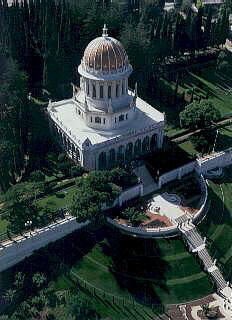  |
| Shrine of the Báb Shrine of the Báb |
|
 |
| Shrine of the Báb |
|
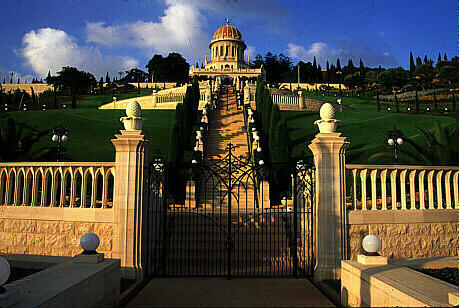 |
| Shrine of the Báb |
|
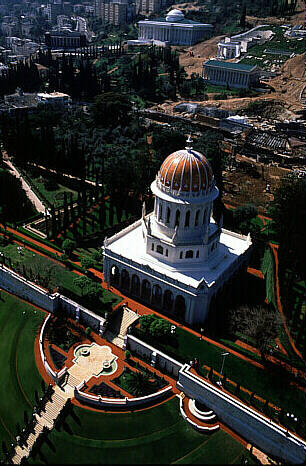 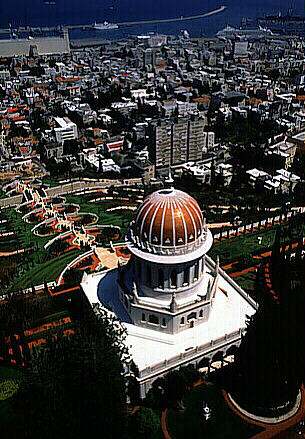 |
| Shrine of the Báb Shrine of the Báb |
|
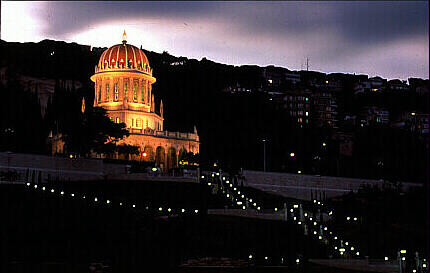 |
| Shrine of the Báb |
|
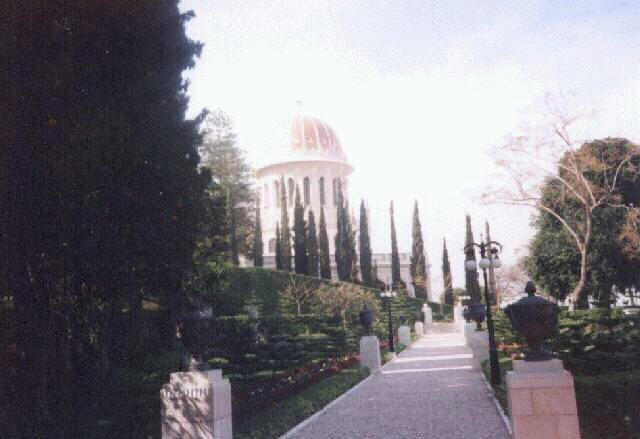 |
| Shrine of the Báb |
|
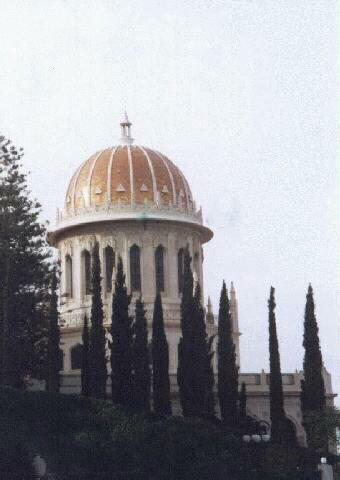 |
| Shrine of the Báb |
[  ] ] |









